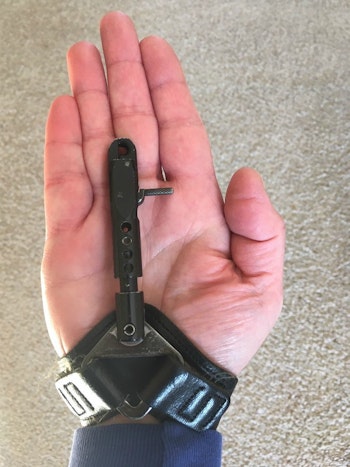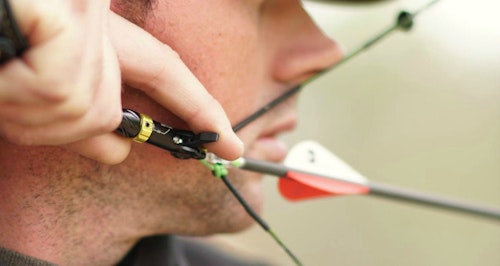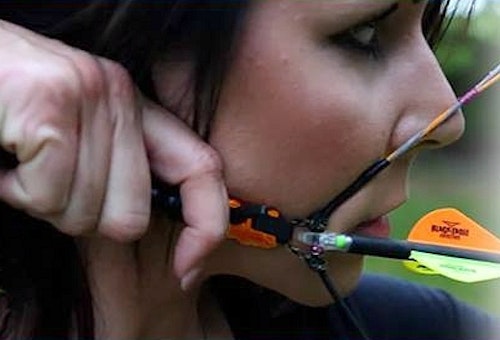I didn’t grow up shooting a compound bow with a mechanical release. In fact, I didn’t make the switch from fingers to a release with a compound until I’d been bowhunting for 25 years. When I first tried an index-style release, it felt awkward, but I soon learned to enjoy its obvious advantages, especially with short axle-to-axle length compounds.
One day while shooting at a pro shop, an employee walked over and offered a bit of advice. “Do you mind if I stop you for a second?” he said. “Your release is set way too long, which is causing you to punch the trigger. I think your accuracy will improve greatly if we get it set up correctly.”
Frankly, I didn’t have a clue. I’d purchased an index-style release that was recommended by a worker at another pro shop, and after a year of using it, I was a good but not great shot. With all the moving parts (human and gear) that combine to send an arrow downrange, I assumed my occasional less-than-ideal shots could be the result of a wide range of factors.
“I’m going to shorten the post length of the release about an inch,” he said. “That will feel really weird at first, but trust me, you’ll get used to it fast.”
After making the adjustment, he handed the release back to me. I had to admit: The release was now adjusted so short that I didn’t think I’d even be able to use it as before. And I couldn’t, which was a good thing, and it led to the second part of his impromptu shooting lesson.
“Draw your bow back while keeping your index finger behind the trigger,” he instructed. “After you find your anchor point, hold your position and then we’ll have a chat.”
I did as he asked, curious as to how any of this was going to help me.
“Unlike before,” he said, “you won’t be touching the trigger with the tip of your finger, or the first joint. When bowhunters do that, they almost always punch the trigger, which leads to all sorts of accuracy and consistency problems. Instead, I want you to form a hook with your finger, with fingertip pointing down. Let the hook rest on the trigger without firing it. The closer the trigger is to the base of your finger the better.”
He carefully moved my index finger into the correct hook position.

“Okay, this is the final piece to the puzzle: To press the trigger to the rear — to release the string — your index finger won’t change its shape. Instead, hold the hook shape, float your bowsight pin on the bull’s-eye, then begin squeezing your shoulder blades together. When you do this, the hook will be pulled rearward, away from the target, and that’s what will trigger the release.”
When I did as he instructed, the arrow left my bow so smoothly it shocked me. I was actually triggering the shot with my back muscles and not the action of my index finger. To this day, it was my biggest lightbulb moment in archery.
As you prepare for next archery season, I encourage you to try the hook method with an index-style release. Your shooting will improve dramatically when you don’t punch the trigger.











